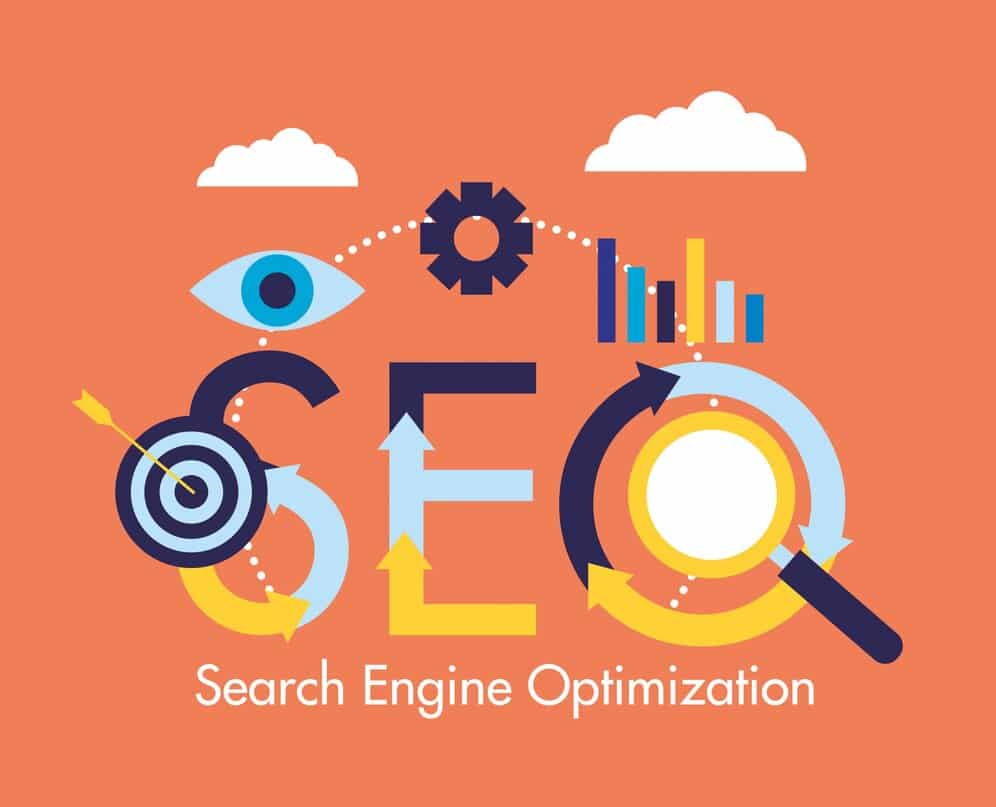If you want to get noticed online, knowing how to rank higher on Google is essential. This guide will help you understand the steps you need to take to improve your website’s visibility in search results. With better rankings, you can attract more visitors and grow your audience. Let’s dive into the key points that will help you achieve this goal.
Key Takeaways
- Understand what factors influence Google’s ranking system.
- Make sure your content matches what users are searching for.
- Focus on keywords that are easier to rank for.
- Improve your website’s on-site SEO for better visibility.
- Build quality backlinks to increase your site’s authority.
Google’s Ranking Algorithm

Google’s ranking algorithm is a complex system that determines how websites are ranked in search results. Understanding this algorithm is crucial for improving your website’s visibility.
Factors Influencing Search Rankings
- Content Quality: High-quality, relevant content is essential for ranking well.
- Backlinks: Links from other reputable sites can boost your authority.
- User Engagement: Metrics like click-through rates and time spent on a page matter.
How Google Evaluates Content Quality
Google looks for several key elements to assess content quality:
- Relevance: Does the content match the search query?
- Originality: Is the content unique and not copied from other sources?
- Expertise: Is the information provided by a knowledgeable source?
The Role of User Experience in Rankings
User experience (UX) plays a significant role in how Google ranks pages. Important factors include:
- Page Load Speed: Faster pages provide a better user experience.
- Mobile-Friendliness: Websites must be easy to use on mobile devices.
- Navigation: Clear and simple navigation helps users find what they need quickly.
In summary, to rank higher on Google, focus on creating quality content, building backlinks, and enhancing user experience.
Aligning Content with Search Intent

Identifying User Intent
Understanding what users are looking for when they search is key. There are generally three types of search intent:
- Informational: Users want to learn something (e.g., “how to change a tire”).
- Navigational: Users are looking for a specific website (e.g., “Facebook login”).
- Transactional: Users want to make a purchase (e.g., “buy new tires”).
Identifying the right intent helps you create content that meets their needs.
Creating Content That Satisfies Intent
Once you know the user intent, you can create content that fits. Here are some tips:
- Match the format: Use articles, videos, or product pages based on what users prefer.
- Provide value: Ensure your content answers questions or solves problems.
- Use clear calls to action: Guide users on what to do next, whether it’s reading more or making a purchase.
Examples of Successful Content Alignment
Here are a few examples of how to align content with search intent:
| Search Query | Content Type | Purpose |
|---|---|---|
| “How to change a tire” | Step-by-step guide | Informational, teaching a skill |
| “Best priced snow tires” | Product comparison | Transactional, helping to make a purchase |
| “Facebook login” | Login page | Navigational, directing to a specific site |
Remember, creating content that aligns with user intent not only improves your rankings but also enhances user satisfaction.
Targeting Low-Difficulty Keywords
What Are Low-Difficulty Keywords?
Low-difficulty keywords are terms that are easier to rank for in search engines. They usually have lower competition, making it simpler for your content to appear on the first page of search results. Finding these keywords can significantly boost your website’s visibility.
Tools for Finding Easy-to-Rank Keywords
To discover low-difficulty keywords, you can use various tools. Here are some popular options:
- Google Keyword Planner: Helps you find keywords and their difficulty scores.
- Ahrefs: Offers insights into keyword competition and search volume.
- Semrush: Provides a detailed analysis of keyword difficulty and related terms.
Strategies for Targeting These Keywords
- Start with a Keyword List: Make a list of keywords related to your niche. Focus on those with low competition.
- Analyze Search Intent: Understand what users are looking for when they search for these keywords. This will help you create relevant content.
- Create Quality Content: Write informative and engaging articles that answer users’ questions. This will help you rank higher.
Targeting low-difficulty keywords can lead to better rankings and more organic traffic. Focus on creating valuable content that meets user needs.
Improving On-Site SEO
On-site SEO is crucial for boosting your website’s visibility on search engines. By optimizing your site effectively, you can improve your chances of ranking higher on Google. Here are some key areas to focus on:
Optimizing Title Tags and Meta Descriptions
- Title Tags: Make sure your title tag includes your main keyword and is engaging to encourage clicks.
- Meta Descriptions: Write clear and concise descriptions that summarize your page content and include relevant keywords.
- H1 Tags: Use H1 tags for your main headings, ensuring they reflect the content of your page.
The Importance of Header Tags
- Structure: Use header tags (H2, H3) to organize your content, making it easier for readers and search engines to understand.
- Keywords: Include relevant keywords in your headers to improve SEO.
- Readability: Break up large blocks of text to enhance user experience and keep visitors engaged.
Enhancing Page Load Speed
- Optimize Images: Compress images to reduce load times without sacrificing quality.
- Minimize Code: Remove unnecessary code and scripts to streamline your website.
- Use Caching: Implement caching solutions to speed up page delivery to users.
Improving your on-site SEO is an ongoing process. Regularly check your site’s performance and make adjustments as needed to stay competitive in search rankings.
Building Authority with Quality Backlinks
the Importance of Backlinks
Backlinks are links from other websites that point to your site. They are crucial because they help build your site’s authority in the eyes of search engines like Google. The more quality backlinks you have, the more trustworthy your site appears.
How to Acquire High-Quality Backlinks
To get high-quality backlinks, consider these strategies:
- Guest Blogging: Write articles for other websites in exchange for a link back to your site.
- Content Partnerships: Collaborate with other businesses to create content that benefits both parties.
- Original Research: Publish unique studies or data that others will want to link to.
Avoiding Black Hat SEO Tactics
It’s important to stay away from unethical practices, known as black hat SEO. These can include:
- Buying backlinks.
- Using spammy link farms.
- Creating duplicate content.
Using these tactics can lead to penalties from Google, which can hurt your site’s ranking.
Building backlinks takes time and effort, but the rewards are worth it. Focus on creating valuable content and forming genuine connections with other sites.
Enhancing User Experience for Better Rankings
The Role of Mobile-Friendliness
To rank well on Google, your website must be easy to use on all devices. A mobile-friendly design ensures that your site looks good and works well on phones, tablets, and computers. This way, visitors can easily navigate your site, no matter what device they are using. Here are some key points to consider:
- Ensure your site adjusts to different screen sizes.
- Test your site on various devices to check usability.
- Use larger buttons and readable text for mobile users.
Improving Site Navigation
Good navigation helps users find what they need quickly. If visitors can’t find information easily, they may leave your site. Here are some tips to enhance navigation:
- Use clear and simple menu labels.
- Include a search bar for easy access to content.
- Organize content into categories for better structure.
Utilizing Responsive Design
Responsive design is crucial for a positive user experience. It allows your website to adapt to any device, ensuring that all users have a good experience. Here’s why it matters:
- It keeps visitors engaged longer, which can improve your search ranking.
- A responsive site reduces bounce rates, as users are less likely to leave if they can easily navigate.
- Google favors sites that provide a good user experience, which can lead to higher rankings.
A well-designed website not only attracts visitors but also keeps them engaged, sending positive signals to Google about your site’s quality.
Utilizing Multimedia to Boost Engagement
In today’s digital world, using multimedia can significantly enhance user engagement on your website. Adding videos, images, and infographics can make your content more appealing and informative. Here’s how you can effectively use multimedia:
Benefits of Using Video Content
- Increases dwell time: Videos keep visitors on your site longer, which is a positive signal to search engines.
- Explains complex ideas: Visuals can simplify difficult topics, making them easier to understand.
- Attracts new audiences: Engaging video content can be shared, bringing in more visitors.
Incorporating Images and Infographics
- Breaks up text: Images can make long articles easier to read and more visually appealing.
- Enhances understanding: Infographics can present data in a clear and engaging way.
- Boosts shareability: Eye-catching visuals are more likely to be shared on social media.
How Multimedia Affects SEO
- Improves user experience: Engaging content keeps users on your site longer, reducing bounce rates.
- Encourages backlinks: Quality multimedia can attract links from other websites, boosting your authority.
- Supports keyword strategy: Properly tagged images and videos can help your content rank better in search results.
Using multimedia is not just about adding visuals; it’s about creating a richer experience for your audience. When done right, it can lead to better engagement and higher rankings on search engines.
Monitoring and Adjusting Your SEO Strategy
Tools for Tracking SEO Performance
To effectively monitor your SEO efforts, you need the right tools. Here are some essential tools to consider:
- Google Analytics: Helps track website traffic and user behavior.
- Google Search Console: Provides insights into how your site appears in search results and identifies issues.
- SEMrush: Offers comprehensive SEO analysis and keyword tracking.
Analyzing Traffic and Engagement Metrics
Understanding how your audience interacts with your site is crucial. Focus on these key metrics:
- Organic Traffic: The number of visitors coming from search engines.
- Bounce Rate: The percentage of visitors who leave after viewing only one page.
- Conversion Rate: The percentage of visitors who complete a desired action, like signing up or making a purchase.
Adapting to Algorithm Changes
Search engines frequently update their algorithms, which can impact your rankings. Here’s how to stay ahead:
- Stay Informed: Follow SEO news and updates from reliable sources.
- Review Your Content: Regularly check if your content aligns with current best practices.
- Test and Optimize: Use A/B testing to see what changes improve your rankings.
Regularly monitoring your SEO strategy is essential for maintaining and improving your rankings. Adaptation is key to success in the ever-changing landscape of search engine optimization.
Final Thoughts on Boosting Your Google Ranking
In conclusion, improving your ranking on Google can really help your website get more visitors and increase sales. It’s important to remember that this process is always changing, so you need to keep an eye on your strategies and update them regularly. By focusing on creating quality content, using the right keywords, and making your site user-friendly, you can climb the search results. Stay committed to these practices, and you’ll likely see your organic traffic grow over time.
Frequently Asked Questions
What is the importance of ranking high on Google?
Ranking high on Google helps you get more visitors to your website. When your site appears at the top of search results, more people are likely to click on it, leading to more traffic.
How can I find low-difficulty keywords?
You can use tools like keyword planners or SEO software to find keywords that are easier to rank for. These tools can show you how competitive a keyword is.
What is user intent in SEO?
User intent is what a person is really looking for when they search online. Understanding this helps you create content that answers their questions better.
Why is user experience important for SEO?
User experience is important because it keeps visitors on your site longer. If your site is easy to use and loads quickly, Google will rank it higher.
What are backlinks and why do they matter?
Backlinks are links from other websites to yours. They are important because they show Google that your site is trustworthy and relevant.
How can I improve my site’s load speed?
You can improve your site’s load speed by compressing images, using a good web host, and minimizing the use of heavy scripts.






Leave a Reply